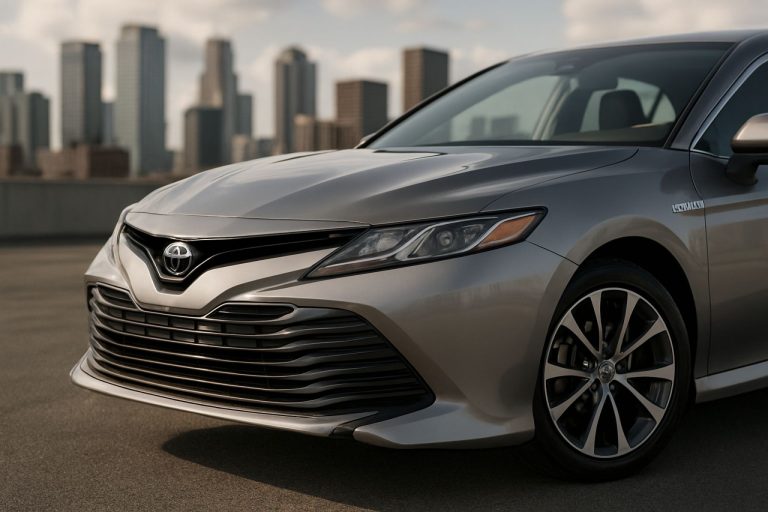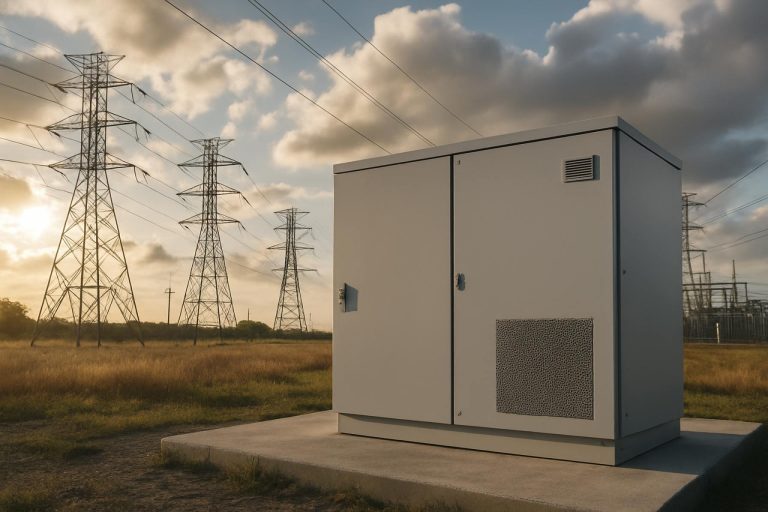
- The partnership between ChargePoint and Eaton accelerates the integration of smart grid technology with electric vehicle (EV) charging infrastructure.
- Bi-directional charging and vehicle-to-everything (V2X) capabilities will allow EVs to serve as dynamic power sources, supporting homes and the grid.
- The alliance streamlines EV charging deployments for consumers, businesses, and cities by bundling chargers, engineering services, and hardware—reducing complexity and cost.
- Operators gain real-time insights and optimized power management through ChargePoint’s cloud platform, enabling smarter, greener operation.
- This joint effort contributes to large-scale decarbonization by empowering EVs to both consume and deliver energy, supporting emerging regulatory requirements and resilient grids.
A quiet transformation is gaining velocity across highways, cityscapes, and even humble suburban driveways. As electric vehicles (EVs) accelerate into the mainstream, the infrastructure powering them must evolve—swiftly, smoothly, and sustainably. This week, a powerful alliance between ChargePoint and energy management titan Eaton signals a new era for how we charge, manage, and ultimately, interact with electric vehicles.
Unveiling a Symbiotic Grid
At the heart of this collaboration lies a sweeping ambition: to create a one-stop ecosystem where EV charging seamlessly fuses with smart grid technology. ChargePoint’s expertise in networked charging solutions now meshes with Eaton’s broad command over intelligent power infrastructure. Together, they promise not only speedier and more reliable charging stations, but also the capacity for bi-directional power flow—enabling EV batteries to serve as dynamic energy resources for homes, offices, and even the broader grid.
This vision pushes boundaries far beyond plug-and-go stations. Imagine a world where your parked vehicle can cushion your household against a blackout, or help grid operators balance surges in renewable energy. This is the emerging potential of vehicle-to-everything (V2X) technology—a future where electrified mobility doesn’t merely consume energy, but actively returns it.
Streamlined Solutions for Supercharged Growth
Consumers, businesses, and municipalities have long faced headaches when deploying charging infrastructure. Fragmented purchasing, complex design requirements, and costly upgrades often stand in the way. The new partnership pledges to eliminate those pain points. By bundling chargers, engineering services, and electrical hardware, they simplify every phase: from a city retrofitting downtown garages to a fleet manager converting dozens of delivery vans.
The end result? Faster rollouts, reduced costs, and—critically—solutions tailored to the surging needs of North America and Eaton‘s stronghold in European energy markets. With the ChargePoint cloud platform at its center, operators gain real-time insights into usage, power management, and maintenance—facilitating smarter decisions and greener footprints.
The Big Picture: Decarbonization in Action
The stakes couldn’t be higher. Transportation remains a leading source of greenhouse gas emissions worldwide. By equipping EVs to both draw and distribute electricity more intelligently, ChargePoint and Eaton are building the connective tissue for large-scale decarbonization. Their joint effort dovetails with rising regulatory standards across both continents, which increasingly mandate not just cleaner cars but more robust and resilient electric grids.
Charging Ahead
This alliance is not merely about making EV charging faster; it’s about turning every connected vehicle into an agent of positive change, balancing energy loads and buffering communities against the uncertainties of tomorrow’s climate. As industry leaders collaborate, expect to see charging stations become nodes of intelligence, resilience, and environmental stewardship.
The road ahead is electrifying—and it’s open to all. For ongoing updates on the ever-evolving energy landscape, keep exploring the world of innovative power solutions at ChargePoint and Eaton. Today’s partnerships are quietly engineering the future, one kilowatt at a time.
Key Takeaway:
Collaborations like this do more than install chargers—they weave a smarter, more sustainable future, transforming every EV into a vital part of our energy ecosystem.
The EV Power Shift: 7 Emerging Facts and Hidden Insights About the ChargePoint & Eaton Alliance
Beyond Charging: Why the ChargePoint and Eaton Partnership Signals a Tipping Point for Electric Vehicles
As electric vehicles (EVs) become mainstream, the partnership between ChargePoint and Eaton promises not just to accelerate EV adoption, but fundamentally reshape North America and Europe’s power infrastructure. Here’s what you need to know—beyond what’s already made headlines.
1. The New Ecosystem: V2X and Grid Interactivity
While vehicle-to-everything (V2X) was mentioned in the original article, the implications are even bigger:
– V2G (Vehicle-to-Grid): According to a U.S. Department of Energy analysis, bi-directional charging can help utilities avoid costly grid upgrades by smoothing out energy peaks.
– Home Backup: Newer bidirectional EV chargers (e.g., from ChargePoint) can already provide home backup in power outages—an emerging feature with growing market demand.
– Revenue Streams: Fleet operators and homeowners with V2X capability may be able to sell energy back to the grid during high-demand periods, a process supported in some utility pilot programs worldwide (see studies on California’s V2G pilots).
2. Fast-Tracking Installation: How-To Steps & Life Hacks
The ChargePoint/Eaton bundle cuts through bureaucracy and installation woes:
– Single-Vendor Procurement: One-stop shopping expedites the permitting and purchasing process.
– Integrated Design: Smart switchgear from Eaton communicates directly with EV chargers, so installers spend less time on-site and face fewer compatibility surprises.
– Life Hack: Use bundled engineering and project management from these alliances to lower total installation costs versus piecemeal approaches—especially for businesses electrifying small-to-mid-sized fleets.
3. Real-World Use Cases Driving Adoption
This partnership isn’t theory—it’s happening on the ground:
– Logistics: Major delivery companies are transitioning to electric fleets. With bundled solutions, depots can optimize charging so vehicles are ready each morning—without crushing utility bills.
– Municipalities: City governments are retrofitting garages and street parking for overnight EV charging, preparing for future mandates on electrified public transport.
– Multi-Unit Dwellings: Apartments and condos, notorious for slow charging rollouts, benefit from “turnkey” installation models.
4. Specs, Pricing, and Tech Features
Although not fully detailed in the original article, here’s what’s known industry-wide:
– ChargePoint offers AC and DC fast charging up to 500 kW.
– Eaton’s smart panels support digital metering, remote diagnostics, and integration with solar/wind storage.
– Bundled solutions typically range from $5,000 (Level 2 commercial) to $100,000+ (multi-port DC fast installations), with grid-ready options pushing the high end.
– Expect remote control, real-time analytics, power-limiting features, and cybersecurity from both partners.
5. Security & Sustainability: What You Need to Know
– Cybersecurity: Eaton’s platforms are UL 2900-1 & IEC 62443 certified, helping prevent hacking threats to grid-connected chargers.
– Environmental Impact: Both companies claim their solutions hit the highest sustainability marks—using recyclable materials, energy-efficient manufacturing, and upgradable software platforms to reduce e-waste.
– Safety: Integrated platforms minimize the risk of grid overload and cut accidental downtime, preserving local resilience during natural disasters.
6. Market Forecasts & Industry Trends
– Growth Trajectory: BloombergNEF predicts the North American EV charging market will surpass $10 billion by 2030, with integrated, smart grid-capable solutions leading the pack.
– Regulatory Push: The EU and many U.S. states are requiring new buildings and renovations to include pre-wired EV charging infrastructure, driving B2B demand for integrated solutions.
– Competitive Landscape: ChargePoint/Eaton face competition from Tesla, ABB, Siemens, and Shell, who are also racing to provide grid-smart charging platforms.
7. Limitations, Controversies, and Reader Questions
– Interoperability: Will your EV work with these new bidirectional chargers? Compatibility is improving with CCS standards, but not all automakers (for example, Tesla with proprietary connectors in some markets) are fully on board.
– Return on Investment: Homeowners and small businesses may need to wait several years to see paybacks—from reduced energy bills, utility compensation, or enhanced property values.
– Redundancy: Bi-directional charging requires both a compatible EV and home electrical system—check with your installer and automaker for full readiness.
Pressing Questions Answered
Do I need a special EV to use V2G?
Yes, not all electric vehicles currently support bidirectional charging. Look for manufacturers advertising V2G or V2H (Vehicle-to-Home) features.
Is the process secure?
Yes, leading solutions use industry-standard encryption and regular security updates.
How soon can I get this technology?
Large-scale rollouts are starting in 2024-2025, with pilot programs already in place in select regions.
Is this only for new buildings/fleets?
No, retrofitting is possible. Expect added complexity if upgrading older structures.
How does this help the environment?
Balancing grid loads and enabling renewables integration reduces fossil fuel reliance, meaning less pollution and greenhouse gas emissions.
Quick Actionable Tips
– If you’re considering EV charging for your business, request turnkey project bids from partners like ChargePoint/Eaton for faster ROI and reliable service.
– Homeowners: Monitor if your next EV supports V2G. Get quotes from certified installers to upgrade your home panel to grid-interactive models.
– Stay informed about local utility incentives or pilot programs that may offset installation costs.
Conclusion: Why These Partnerships Matter
The alliance between ChargePoint and Eaton is about more than plugging in your next EV. It’s about integrating vehicles and infrastructure into a unified smart grid, lowering costs, increasing resilience, and achieving real decarbonization. If you want to be part of the electrification revolution, now is the time to watch, learn, and act.
For more on connected charging, visit ChargePoint and Eaton. And stay tuned as this quiet revolution picks up speed—one charge, one smart grid, one climate solution at a time.



